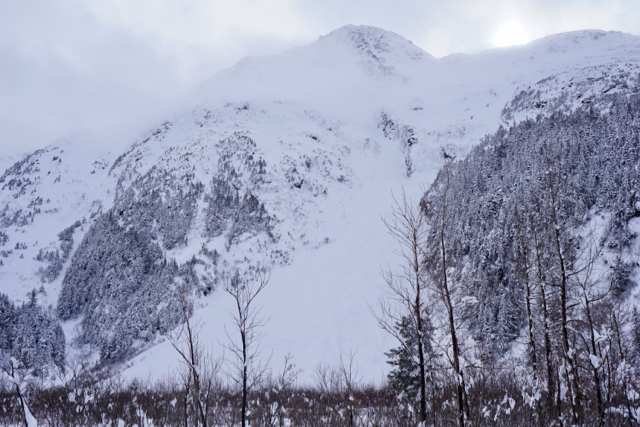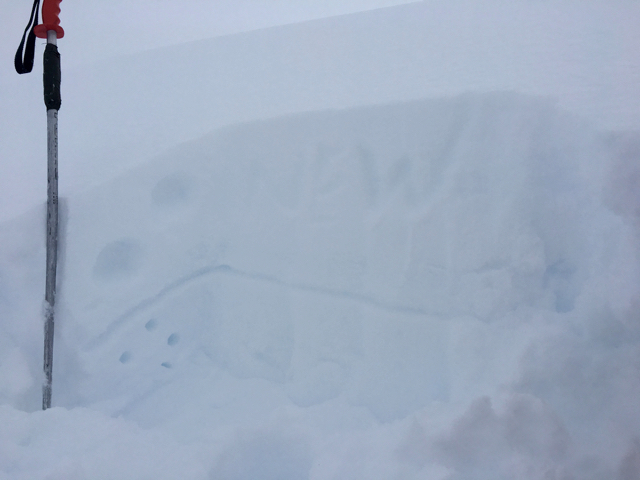Turnagain Pass
|
|
There remains a HIGH avalanche danger in the Alpine (above 2,500′). Natural wind slab avalanches 2-4′ thick will be likely due to strong winds forecast today in the mountains surrounding the Eastern Turnagain Arm (such as Turnagain Pass, Girdwood Valley and Placer Valley). Below 2,500′ and in areas out of the wind, a CONSIDERABLE avalanche danger exists for storm slabs 1-2′ thick composed of new snow from Tuesday night’s storm. Natural cornice falls are also possible and could trigger slabs below along with loose snow avalanches. With the continued active weather pattern, today will be another day to avoid avalanche terrain.
*A potent storm system moving in tonight is expected to keep the danger elevated into the weekend.
Hiking in Portage Valley: Travel along, and past, the designated Byron Glacier trail is not recommended due to exposure to avalanche terrain. Natural avalanches are possible today that could send debris to valley floors.
Summit Lake: Roughly 6-8″ of new snow fell as of yesterday. Strong winds are expected in this region as well. Read the Saturday Summit Summary HERE.
Tomorrow is the deadline for applying for your 2017 PFD!! Please consider showing your support for public avalanche centers when applying – the Friends of the Chugach National Forest Avalanche Center is an official Pick. Click. Give. organization!
*A reminder that the Skookum Valley closes to motorized use on April 1st, this Saturday. All other motorized areas remain open – see area status on the bottom of this page for more information.



